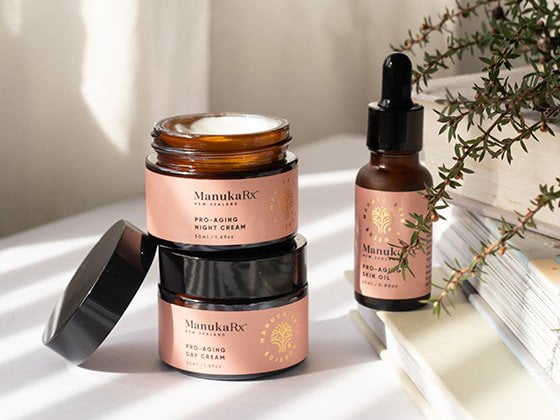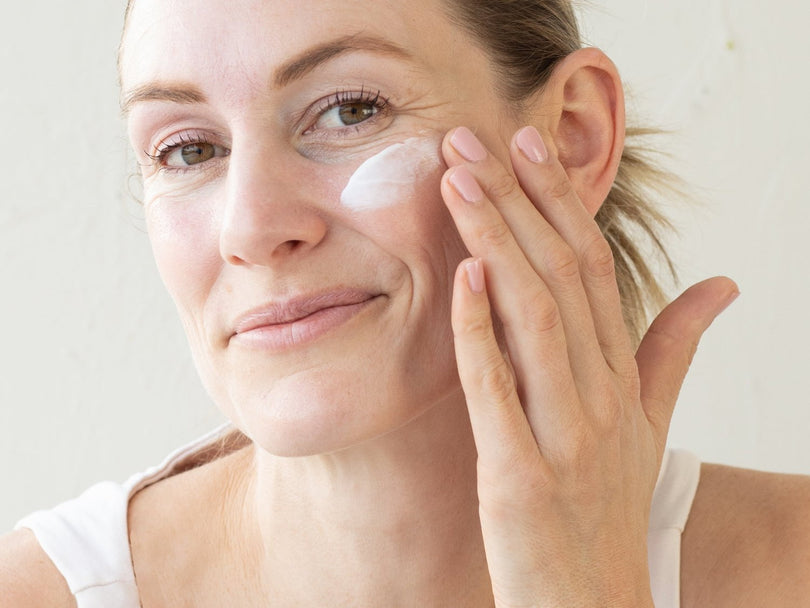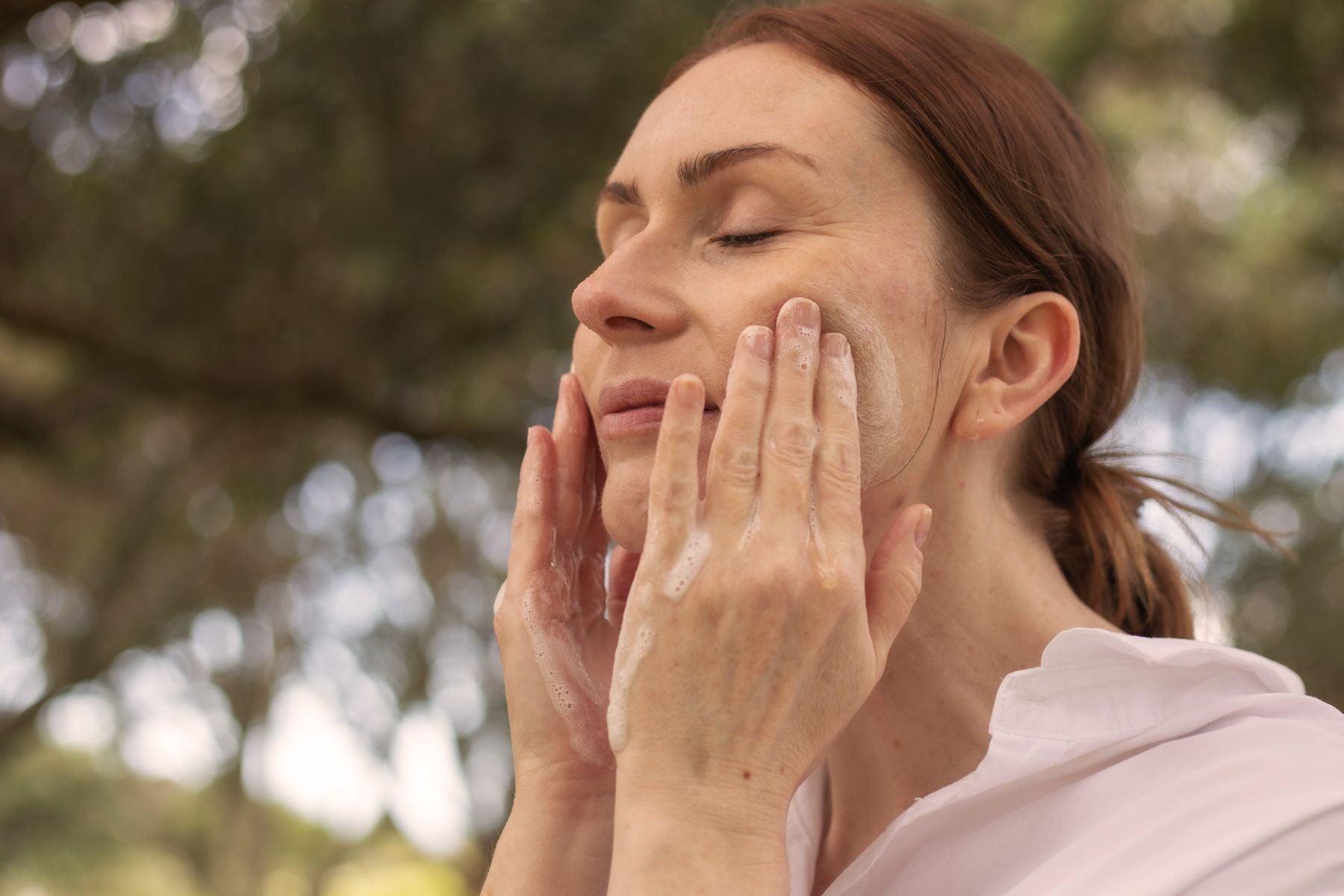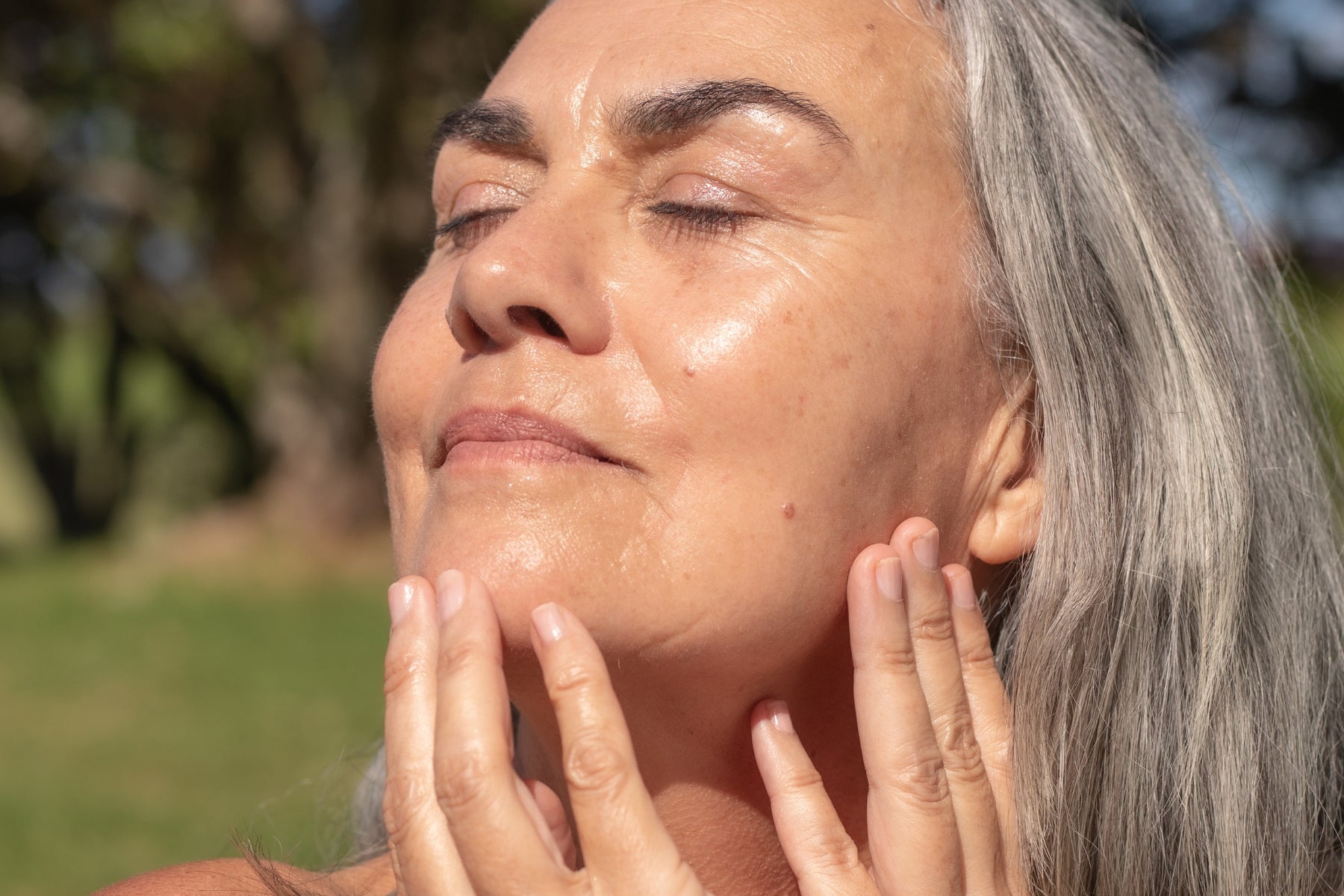You may have heard of a few marvelous myrtles taking over the skincare world popping up from Oceania, but you may not know the differences between mānuka, kānuka, and Australian tea tree oil.

After all, there seems to be a “BRAND NEW” revolutionary skincare something-or-other coming out daily. But science lays out the incredible benefits of these three essential oils and we are going to break them down for you.
Each of these plants may come from the same myrtle family and are quite amazing in their own ways, but there are some important and unique benefits science has proven that sets mānuka oil above the others.
We are going to dive into a bit of the science behind these powerful plants (without getting too “sciency” on you) so you can have the knowledge you need when choosing which of these oils to use for your skincare challenges. Let’s dive in!
What Are The Differences Between Kānuka, Australian Tea Tree, and Mānuka Oil?
Kānuka Oil
Kānuka oil, aka Kunzea Ericoides, is similar in some ways to mānuka’s appearance, though the similarities mostly stop there. It is one of New Zealand’s great native flora but it grows much taller than mānuka and is a sought after material for building traditional style houses. Endemic to New Zealand, this myrtle grows up to 30 meters tall bursting with white flowers and was used by the Māori for building houses and making weapons.

Kānuka Oil Benefits
Kānuka oil is high in monoterpenes, a compound found in many essential oils that give off a nice aroma. So, while kānuka oil is wonderful for aromatherapy for relaxation and often used as a massage oil because of its lightness, it lacks triketones that give mānuka oil antibacterial superpowers.
Australian Tea Tree Oil
Melaleuca is the fancy science name for Australian tea tree and the oil produced from this native Australian plant has a ton of skincare and antibacterial benefits. No wonder it’s in almost every popular skin and hair care brand these days. High in terpinen-4-ol, this compound gives tea tree oil the ability to kill off certain bacterias, viruses, and fungi.
Tea Tree Oil Uses
Because it smells great, you often find Australian tea tree used in hair care products like shampoos and conditioners. It’s effective in fighting off dandruff, works great as an insect repellent, and is commonly used to help relieve fungal issues like athletes' feet.
Mānuka Oil
If you’ve been on our blog before, you know we love talking about mānuka (stating the obvious a little there) but it’s not just about knowing the benefits, you need to know the how and why behind them as well.
Leptospermum Scoparium
Mānuka, known scientifically as Leptospermum Scoparium, is a native plant to New Zealand that has been utilised by the Māori for centuries to treat wounds and help address an assortment of ailments. You’ll see it in abundance all over the country because, even though it was considered a pest once-upon-a-time, this resilient plant is saving communities across New Zealand and helping protect the environment. And all types of mānuka oil hold many varying benefits.
Mistaken Identities
Mānuka oil has even been mistakenly referred to as “tea tree” when Captain Cook sailed into Aotearoa. Captain Cook gave mānuka the name of "tea tree" and wrote of it..."the leaves were used by many of us as a tea which has a very agreeable bitter taste and flavour." Early settlers also called it "tea tree" as they too made a drink of it. But it’s not a tea tree, and is rated to be up to 20-30 times more potent with antibacterial properties than its Australian cousin*.
*Mānuka oil from New Zealand's East Cape region is 20-30x stronger than tea tree oil against gram positive (bad skin) bacteria.
Mānuka Oil and Mānuka Honey
Now, we all know just how special and incredible mānuka honey is, and the enzymes are powerful enough that it has been prescribed for serious skin conditions and burns and is effective at healing wounds and infections. That mostly comes down to mānuka honey’s natural hydrogen peroxide make-up.
But many people aren’t familiar with mānuka oil, and that’s because it has only been distilled for around 30 years. Most may not know that it is even 1000 times more powerful than the honey for antibacterial effectiveness. Pretty astonishing huh? The oil is amazing at promoting skin cell regeneration and white blood cell production, all the while fighting off bad bacteria. Though, we will say, mānuka honey has it beat in tea or on toast.
So Where Does Mānuka Get This Power?
The plant powered punch mānuka oil comes from it’s high beta-triketone content, though as the science behind it has proven, not all mānuka plants are equal. On the east coast of New Zealand, the triketone content is much higher than other areas giving the antibacterial, antimicrobial, and antifungal power to East Cape mānuka oil. This is exactly why we use East Cape mānuka in all of our products and what makes it the most powerful essential oil in nature.

Mānuka Oil vs. Australian Tea Tree Oil
Though both mānuka oil and tea tree oil are great antibacterial essential oils, because of the much higher amount of beta-triketone compounds found inside of East Cape mānuka oil, it’s up to 20-30 times more effective at killing off bad skin bacteria. This includes the extra wicked bacterias like staphylococcus common in hospitals and medical facilities that can be very dangerous, giving mānuka oil the one up in fighting severe skin concerns such as chronic acne, infections and inflammation, and more.

Mānuka oil is also very gentle on the skin and synergistic which enables it to work in tandem with other ingredients to create amazing essential oils blends. Though uses of both tea tree oil and mānuka oil are similar, the bottom line is that mānuka oil is leaps and bounds more versatile and effective for skincare challenges of any kind.
Want to know more about the science behind mānuka oil’s magic? Head to our Science Category on the blog to go in-depth, or explore our shop to see all of the mānuka oil products that will help you live better, naturally.






